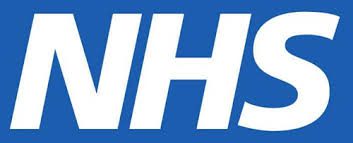A dedicated Cancer Innovation Strategy would allow us to identify, evaluate, and scale the innovations that will save lives, reduce inequalities, and create a more sustainable NHS. Michael Ridgwell, Chief Operating Officer at the Health Innovation Network, explains more in this blog.
The Health Innovation Network recently submitted evidence to the Government’s call for evidence to the National Cancer Plan. Cancer outcomes are improving, but the burden of the disease continues to grow for individuals, families, the NHS, and the economy. According to the NHS, 1 in 2 people will develop some form of cancer during their lifetime. Therefore, most people in the UK have, or will have, some form of lived experience of cancer services, either as a patient or the family member or loved one of someone receiving cancer treatment. In addition to the significant physical and psychological impact of cancer on patients and families, it’s important to recognise the impact it has on a patient’s ability to work and/or care for loved ones. As highlighted by Cancer Research UK, the UK is projected to lose the equivalent of 170,000 full-time workers to cancer each year between 2023 and 2050. The OECD estimates cancer could cost the UK an additional £14.4 billion annually, alongside the economic impact on patients and their families, by 2050 without significant action. Health innovation that is improving prevention, diagnosis and treatment is critical not just to saving lives, but to sustaining our health system and driving economic growth.
We believe that a Cancer Innovation Strategy should be a core component of the National Cancer Plan, driving forward the development, adoption and scaling of proven solutions across the NHS. From prevention and early diagnosis, through to treatment and survivorship, here are just a few of the examples we shared as evidence with the Government.
Prevention and Early Diagnosis
Evidence provided by Cancer Research UK states that the UK could “prevent one in five premature cancer deaths” by investing in cancer research, prevention, diagnosis and treatment (1) – innovation has a critical role to play in supporting service improvements in both these areas.
Addressing risk factors like tobacco use, obesity, and alcohol consumption will require not just public health campaigns, but innovative tools and services that make healthier choices easier and more accessible, such as Sweatcoin supported by the Health Innovation Network South London’s DigitalHealth.London Accelerator).
Digital and AI also offer huge opportunities for speeding up diagnosis. One example of an innovation which is being supported across the Health Innovation Network is C the Signs, an integrated clinical decision-support system that assists healthcare professionals to spot cancer at an earlier stage, when survival rates are highest. It supports the timely and effective referrals from primary care. The system uses the latest robust evidence and clinical data to help detect cancer – evaluating tens of thousands of peer-reviewed publications and only uses data points which have been academically validated.
The local implementation of C the Signs across 35 GP practices in Ipswich and East Suffolk, with 303 registered users in February 2023, supported by Health Innovation East delivered a 12.3% increase in cancer detection rates , across a population of 420,000.
Whilst the implementation of C The Signs to drive uptake of Fecal Immunochemical Test (FIT) testing for colon cancer amongst people in underserved groups in Dorset, coordinated by Health Innovation Wessex. supported over 43,000 suspected cancer referrals, assessing over 10,000 and safety netting 58,000 patients.
Following its inclusion in the 2021 NIA programme, EndoSign/Cytosponge, developed by Cyted was supported by Health Innovation North West Coast that led the development of a consortia (Cyted, HINWC, Lancashire and S Cumbria Cancer Alliance, St Helens and Knowsley Trust) and secured £4.5m of SBRI Healthcare Cancer Call funding to implement two scale and adoption programmes – Cytoprime 1 (scaling Cytosponge in the North West). Cytoprime 2 (increasing scaling in NW, and scale across 3 NHS regions). The innovation is a small capsule that collects a sample of cells from your oesophagus (gullet). This will then be tested to find out if there are any cells which are unexpected or abnormal. Impacts include >2000 procedures in the Cytoprime programmes, Barrett’s surveillance backlog cleared at multiple sites with economic analysis demonstrating referral reduction for endoscopy procedures saves £653 per patient appointment; saves a typical ICS £3.8m over 5 years. This has been 10-year journey for the innovator and innovation from early research to early-stage implementation and the health innovation networks have supported the company through the different development stages.
Treatment and Living Beyond Cancer
Innovation is also improving the quality and capacity of treatment services. Projects like Neutrocheck, an at-home finger-prick test to detect neutropenic sepsis common and very dangerous for patients undergoing chemotherapy, supported by Health Innovation East, and Teledermatology, supported by the Health Innovation Network South London are easing the burden on NHS services while improving patient safety and experience.
Equally important is improving the support for people living with and beyond cancer. Innovations like Gentle Recovery, offering at-home oncology rehabilitation programmes, and the patient-centred Marie™ proton beam therapy system show how we can deliver not just better survival rates, but better quality of life after cancer. In some instances, this enables people to get back to work more quickly and therefore supports economic growth too.
Tackling Inequalities Through Innovation
Cancer remains one of the five clinical priorities within the national Core20PLUS5 approach to reducing healthcare inequalities. With deaths from cancer responsible for circa 20% of the life expectancy gap and deprived and underserved communities known to have reduced uptake of cancer screening programmes, and, implementing innovations that improve prevention, earlier diagnoses and access to treatment will be key to reducing inequalities. A practical example of this is Belle’s Place, one of the Healthcare Inequalities Programme (InHIP)’s local projects, which sought to increase use of the NICE-recommended faecal immunochemical test (qFIT) in a community setting.
As part of the project, Combe Coastal Practice in Ilfracombe, which is in the top 15% most deprived areas in the country, partnered with the local community hub, Belle’s Place, to provide routine healthcare to underserved patients, including colorectal cancer screening using qFIT. An evaluation carried out to understand efficacy of the service, patient engagement and staff experience found that of the 84 appointments were arranged, more than half of them received personalised healthcare from a GP and most patients returned for follow-up sessions. The majority of those were male, white British, and over 50 years of age, representing a significant underserved population at risk in the South West.
Part of the same national InHIP initiative, Health Innovation Network South London developed an e-learning tool in partnership with the South East London Cancer Alliance to tackle the inequity in cancer outcomes for people with Serious Mental Illness (SMI). The team worked with more than 70 people with lived experience to develop online learning resources that help people with SMI feel more in control about cancer.
The InHIP programme is an example of how the health innovation networks are set up to adapt national strategies and priorities to local needs, which is vital when tackling health inequalities in cancer care.
A Call to Action
Tackling cancer is one of the greatest challenges and opportunities of our time. It is only by a focus on the implementation of innovation, we can meet it. The Health Innovation Network, with our deep roots in local systems and national reach, looks forward to working together with our local NHS workforce, academia, industry and the third sector to deliver the National Cancer Plan. A dedicated Cancer Innovation Strategy would allow us to identify, evaluate, and scale the innovations that will save lives, reduce inequalities, and create a more sustainable NHS.
(1) – The cost of cancer: what does it mean for the UK economy?

A dedicated Cancer Innovation Strategy would allow us to identify, evaluate, and scale the innovations that will save lives, reduce inequalities, and create a more sustainable NHS. Michael Ridgwell, Chief Operating Officer at the Health Innovation Network, explains more in this blog. The Health Innovation Network recently submitted evidence to the Government’s call for evidence [...]

Grace Gimson is the founder and CEO of Holly Health, a digital platform dedicated to transforming healthcare through preventive and person-centered digital health coaching. The platform aims to support individuals struggling with mental or physical health. Grace is a generalist with a background in operations, business leadership, and scaling tech startups such as Deliveroo. [...]

HN (Health Navigator) is an AI-powered health innovation that enables preventative care through predictive analytics. Founded in Sweden by Dr Joachim Werr, a former A&E consultant, HN is now supporting healthcare systems across the UK to identify high-risk patients before they reach crisis point. Joachim shares the journey behind HN and the transformative impact of [...]





